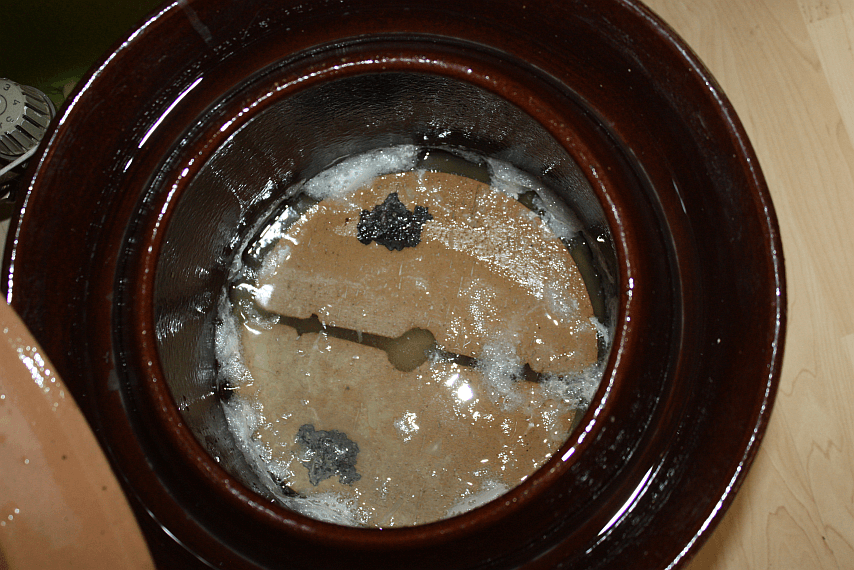Search the Blog
Latest Comments
The Deliciousness of Lactic Acid.
Also. Fermenting. The wonder of bacteria doing their thing, and of good stuff going different and somehow even better than before. Fermenting food is a very old method of making things keep, and some kind of fermenting procedure, for a variety of foodstuff, can be found in most cultures. Germany is probably most famous for its Sauerkraut - cabbage, usually white cabbage, fermented and thus soured.
All you need for making Sauerkraut is cabbage and salt - that's it. And maybe a little bit of water. Key for success here is that the fermenting stuff is always and completely submerged under its juice, which has salt added to it (0.5-3 % of prepared cabbage weight is the spectrum that I found); otherwise there can be mould growth.
I tried fermenting green beans in a glass jar a few years ago (which went middling well) and also tried to make salt lemons (essentially the same thing - put lemons and salt in a jar and wait for fermentation), which went horribly wrong. For Sauerkraut, though, I felt like it would be smart to use a special fermentation crock - because, well, making just a tiny glass jar of the stuff didn't really feel like the thing to do, and from my previous two tries at fermenting things, I was pretty sure it would be easier with a larger amount in a proper vessel.
A short time before Christmas, I finally managed to get my hands on a proper pot... through our town's special small ads board. Said board, called "Verschenkbörse" (give-away-market, more or less) is mostly used to list things that you don't need anymore, but that are too good to throw away. You list them and either say you give them away for free, or ask for something else in exchange - the one rule is strictly goods only, no vouchers and no money as exchange goods. It's also possible to do a "in search of" ad, which is what I did - and ended up with a 20 l fermentation pot (which is quite large, yes, and a 10 l one would have been fine too, but it's no problem leaving space in a large one).
Little more than a week ago, we raided the market for a few kilograms of cabbage, and an evening was spent shredding, kneading, and pressing everything into the container. So far, it's going well - a first taste test has already proven the contents to be quite delicious, and in a few more weeks, it will be all ready.
[caption id="attachment_5761" align="alignnone" width="854"]
 A glimpse into the pot - two weights come with these kinds of fermentation vats, to keep all things nicely pressed down under the surface of the liquid. You can see some foam (that is normal); the black spots are discolorations of the weights. Unfortunately it's not possible to photograph the pleasantly acidic scent!
A glimpse into the pot - two weights come with these kinds of fermentation vats, to keep all things nicely pressed down under the surface of the liquid. You can see some foam (that is normal); the black spots are discolorations of the weights. Unfortunately it's not possible to photograph the pleasantly acidic scent!I'm already looking forward to wonderful Sauerkraut...
Comments 2
Apologies if I'm missing something. I, too, enjoy making sauerkraut. I can't tell from the photo, but are you keeping water in the trough to make a seal between the lid and the crock? It is a marvelous feature of these fermentation crocks. And fun to hear the lid shake in the trough when the gas pops through the water.
It's hard to tell on the picture, but yes - there is a little (salt) water in the trough. It's one of the reasons that bigger is easier in this case - normal glass jars don't have that fun feature, and if the crock is large, there's more space for water in the trough, so it doesn't dry out as quickly and sneakily.
My lid has two small notches at the bottom so that gas can escape without rattling it - no funny noises here that way... it also makes placing the lid back on without accidentally spilling the water from the trough a good bit easier.



